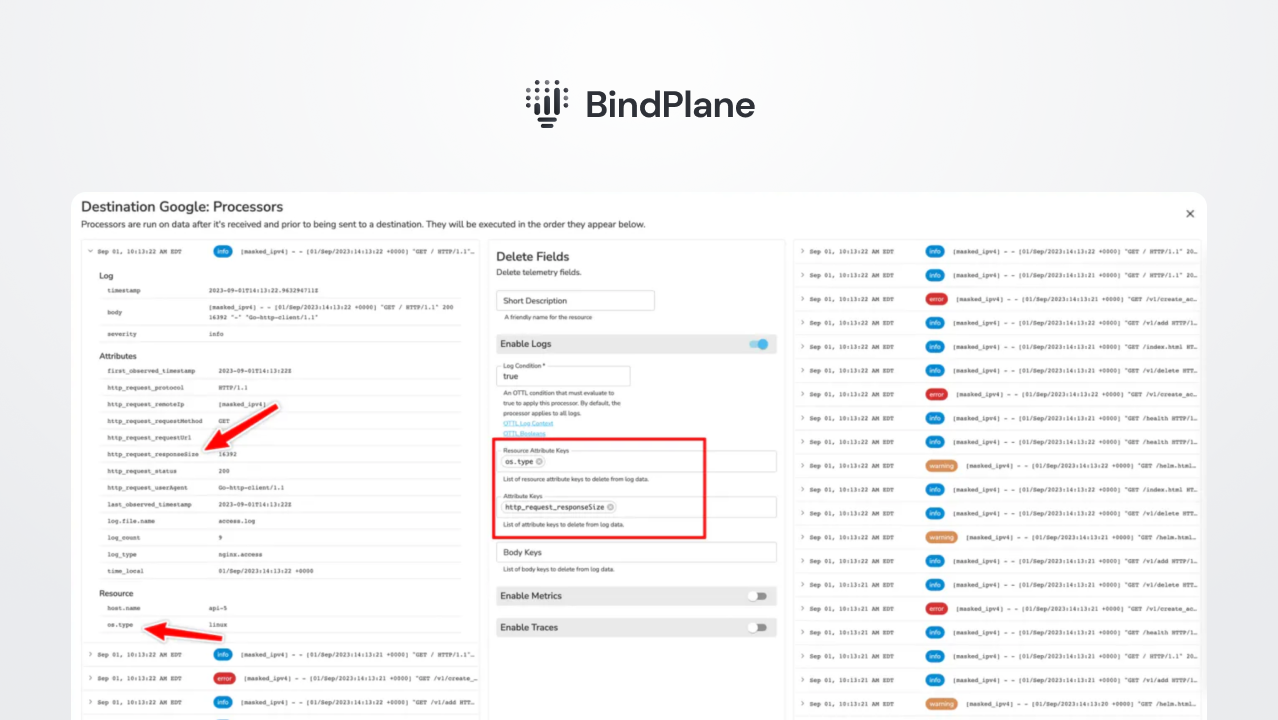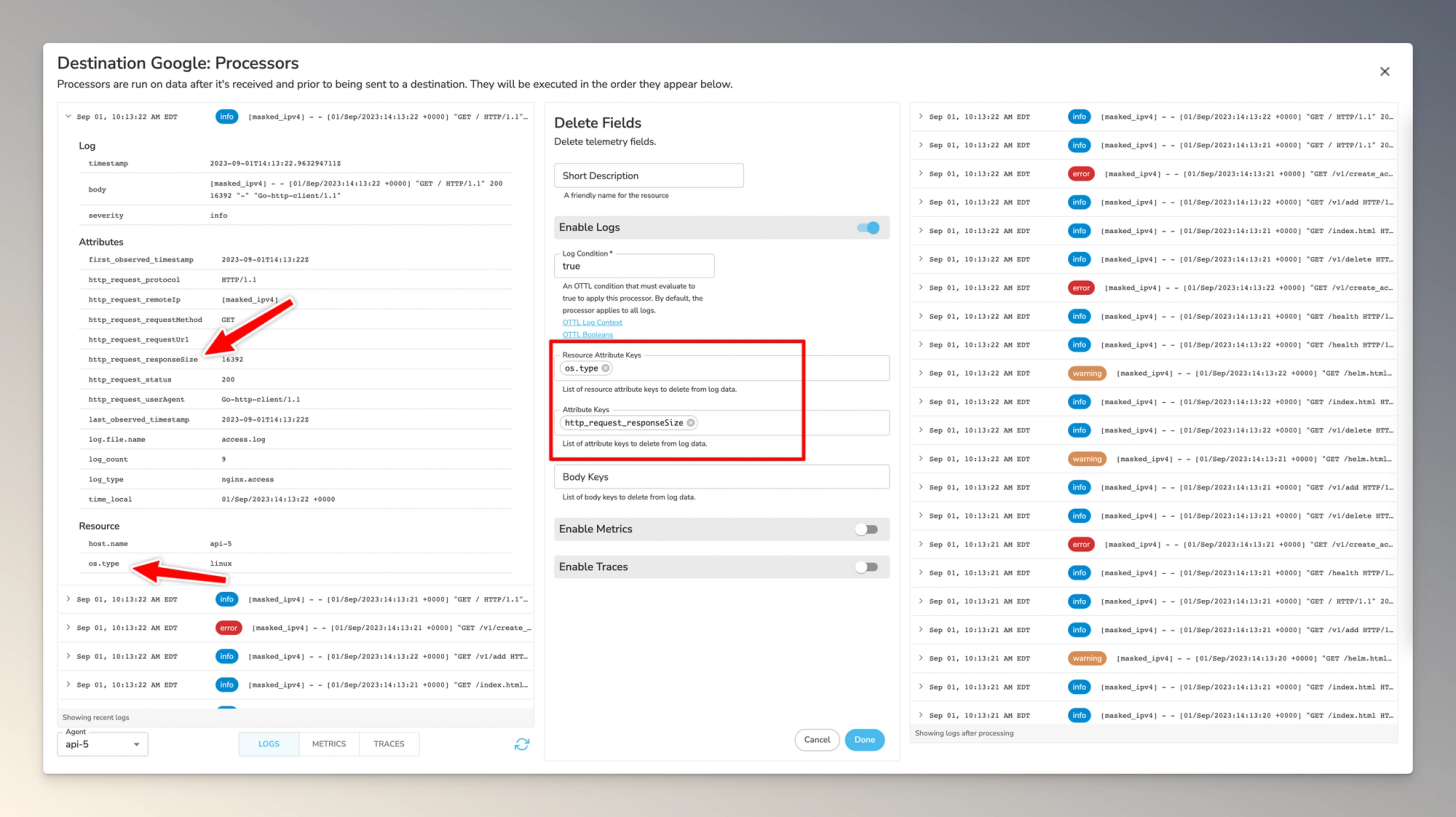Deleting Fields from Logs: Why Less is Often More

Logs serve as an invaluable resource for monitoring system health, debugging issues, and maintaining security. But as our applications grow more complex, the volume of logs they generate is increasing exponentially.
While logs are crucial, not all log data is equally valuable. With the surge in volume, costs associated with storing and analyzing logs are skyrocketing, impacting both performance and price. The need for effective log management is more urgent than ever. A common way to start reducing the size of your logs is to eliminate the noise by removing unnecessary fields from them.
Why Should You Delete Fields from Logs?
- Cost Efficiency: High-volume logs can be expensive to store and analyze. Removing extraneous fields can reduce storage costs and speed up query times.
- Improved Readability: Less clutter makes logs easier to read and understand. When you're troubleshooting, every second counts, and sifting through irrelevant fields can be time-consuming.
- Enhanced Performance: Excessive data can slow down your log management tools. Trimming down logs can result in faster indexing and more responsive searching.
- Data Compliance: Reducing fields can also help with adhering to data protection regulations by eliminating personally identifiable information (PII) that isn’t necessary for your logging objectives.
Related Content: How to Remove Fields with Empty Values From Your Logs
Common Culprits: Log Types with Unnecessary Fields
- Web Server Logs: These often contain numerous fields related to client requests, many of which are not useful for most analytical purposes.
- Application Logs: Custom application logs may include verbose debug information that is not needed in a production environment.
- Security Logs: While crucial for monitoring, these can sometimes capture more information than necessary, potentially causing both performance and compliance issues.
- Database Logs: Query logs and transaction logs may store an exhaustive amount of details, much of which might not be relevant for day-to-day operations or auditing.
This blog post aims to guide you through the steps of optimizing your logs by deleting unnecessary fields using BindPlane OP. By the end, you'll be better equipped to manage your logs effectively, saving both time and resources. So, let's get started.
1. Add the "Delete Fields" Processor to Your Pipeline
Start by clicking on one of the processor nodes in your pipeline and then add the "Delete Fields" processor. This will serve as the gateway to reduce your logs.
2. Use Snapshots to Identify Attributes for Deletion
Once the processor is in place, use the Snapshots feature to identify which attributes within your logs you'd like to remove. For example, you might decide to delete `os.type` from the Resource Attributes and `http_request_responseSize` from the Attributes in your Nginx logs.

3. Customize with Log Condition (Optional)
By default, the "Delete Fields" processor will remove the specified fields from all logs passing through the pipeline. However, if you'd like to apply this deletion only to specific types of logs, you can set a match expression in the "Log Condition" field.
4. Confirm and Click "Done"
Once you're happy with the fields you've selected for deletion and any conditional logic you've set up, click the "Done" button to save your settings.
5. Validate Changes with Live Preview
Before fully committing to the changes, you can confirm that the unnecessary fields were successfully deleted by checking the Live Preview on the right-hand side of the window.
6. Rollout to BindPlane Agents
Last but not least, rollout these new configurations to your BindPlane Agents. As soon as you do, you should see your data throughput drop in real-time on the topology view—a visual confirmation that you've made your logging more efficient.
And there you have it! You've successfully slimmed down your logs without compromising their utility. Now you're all set to enjoy a more streamlined, cost-effective, and high-performing log management experience.
Check out the video tutorial below and for questions/requests/suggestions, reach out to us or join our community slack channel.



